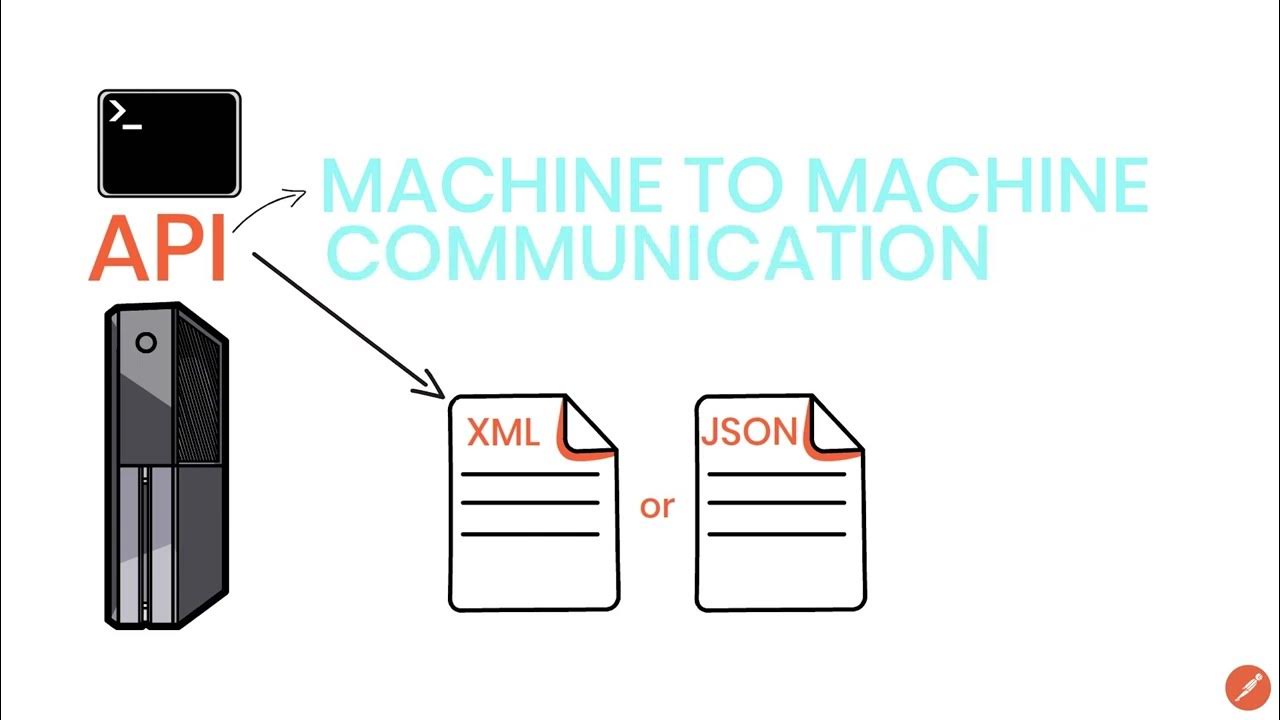ASP.NET Web APIs Explained in 9 Minutes
Summary
TLDRThis video introduces the concept of web APIs, focusing on ASP.NET Web APIs. It explains how web APIs facilitate communication between applications and external services over a network using protocols like HTTP. The video emphasizes two key components in ASP.NET Web APIs: Dependency Injection (DI) and Middleware. DI handles the creation of complex objects, while Middleware ensures a sequential process for handling requests. The video provides a hands-on demonstration of these concepts with middleware examples, showing how controllers and services interact in the request pipeline to return data to clients.
Takeaways
- 😀 A web API is an application that interacts with other services or entities over a network using an API, such as HTTP, GraphQL, gRPC, or sockets.
- 😀 ASP.NET Web APIs are built using a combination of middleware and dependency injection, which helps handle requests and create necessary objects.
- 😀 The two key components to understand in an ASP.NET Web API are dependency injection (DI) and middleware.
- 😀 Dependency injection (DI) uses an Inversion of Control (IoC) container to manage how objects are created and configured.
- 😀 Middleware is a sequence of components that process requests and responses through a pipeline before reaching the endpoint logic.
- 😀 In an ASP.NET Web API, each middleware component calls the next one in line, creating a chain that processes the request and eventually reaches the endpoint.
- 😀 The DI container is responsible for providing services like controllers and custom services (e.g., a movie service) to the application.
- 😀 The middleware configurations involve adding services to the DI container and setting up routing for controller endpoints.
- 😀 To invoke an endpoint in an ASP.NET Web API, the request is processed through the middleware, and the appropriate controller is created via DI.
- 😀 The controller logic is invoked, and the response is processed back through the middleware pipeline before being returned to the client.
- 😀 The core concept of an ASP.NET Web API can be simplified as a combination of middleware and a DI container to manage dependencies and processing sequences.
Q & A
What is a Web API?
-A Web API is an application that interacts with other services or entities over a network, allowing communication via different protocols like HTTP, GraphQL, or others.
What is the main difference between a Web API and a regular application?
-A Web API specifically interacts with the world over a network, while a regular application may not necessarily communicate with other services via the network.
What are the two main components involved in an ASP.NET Web API?
-The two main components are Dependency Injection (DI) or the Inversion of Control (IoC) container and Middleware.
What does the Dependency Injection (DI) container do in an ASP.NET Web API?
-The DI container is responsible for creating and providing instances of services and controllers when they are needed by the application, based on pre-defined configurations.
What role does Middleware play in an ASP.NET Web API?
-Middleware is a sequence of components that handle requests in a specific order. They process the request before it reaches the core logic of the controller and handle the response on the way back.
Can you explain the 'request pipeline' in the context of middleware?
-The request pipeline is the chain of middlewares that a request passes through in sequence. Each middleware can modify the request or call the next middleware until the core logic in the controller is reached.
What is the basic functionality of the Dependency Injection (DI) container?
-The DI container serves as a 'black box' that knows how to create complex objects based on configuration, allowing components like controllers and services to be instantiated as needed.
What happens when a request is made to an ASP.NET Web API endpoint?
-When a request is made, it passes through the middleware sequence in the request pipeline. After passing through all middlewares, it reaches the controller, which contains the core logic for handling the request.
What is the purpose of adding services to the DI container?
-Adding services like controllers and custom services (e.g., MovieService) to the DI container ensures they are available for instantiation when needed by the application.
What does the 'map controllers' middleware do in an ASP.NET Web API?
-The 'map controllers' middleware is responsible for matching incoming requests to the correct route in the controller, ensuring that the right endpoint is invoked.
Outlines

Cette section est réservée aux utilisateurs payants. Améliorez votre compte pour accéder à cette section.
Améliorer maintenantMindmap

Cette section est réservée aux utilisateurs payants. Améliorez votre compte pour accéder à cette section.
Améliorer maintenantKeywords

Cette section est réservée aux utilisateurs payants. Améliorez votre compte pour accéder à cette section.
Améliorer maintenantHighlights

Cette section est réservée aux utilisateurs payants. Améliorez votre compte pour accéder à cette section.
Améliorer maintenantTranscripts

Cette section est réservée aux utilisateurs payants. Améliorez votre compte pour accéder à cette section.
Améliorer maintenantVoir Plus de Vidéos Connexes

01 | Introduction To ASP.NET Web API | What Is Web API ? Web API In ASP.NET | Web API (Hindi/Urdu)

API 001 - What is an API

1. Introduction to API's | Full tutorial for beginners | Learn API concepts |

What is an API? | Intro to APIs Part 1

The Right Way To Build REST APIs

API Design and Management (Understanding API) - بالعربي
5.0 / 5 (0 votes)
